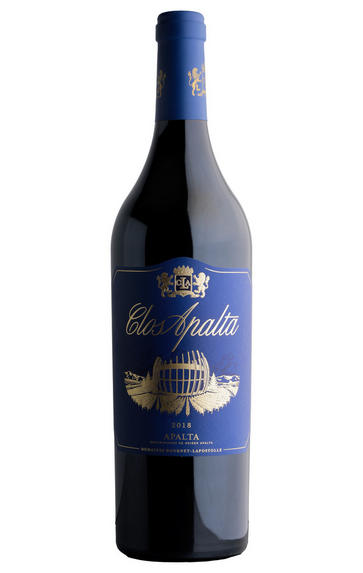
2018 Clos Apalta, Apalta Valley, Chile
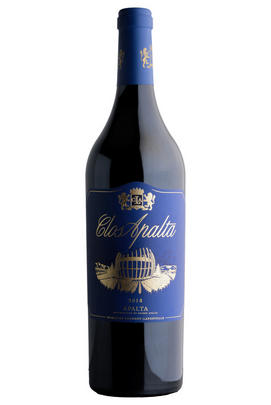
Critics reviews
Full of character and depth, stretches out as it opens. Higher alcohol than the estate’s 2nd wine Le Petit Clos, but you feel it less in this wine because there is so much at play here. Complex and confident, with a flood of flavour; extremely muscular and intense but you get salinity and juice that keeps up the pace, running along- side the fruit from start to finish. Tight tannins, needs a few years in bottle.
Drink 2023 - 2036
Jane Anson, JaneAnson.com (October 2021)
64% Carmenère, 18% Cabernet Sauvignon, 18% Merlot.
Deep ruby colour, with a spicy, leathery nose full of cool but ripe cherry and blackcurrant fruit. There is a touch of vine tomato, but this adds complexity and character without detracting from the fruit. The palate is luscious with dark-cherry fruit. The oak is sweet but measured, as are the fine, ripe tannins. There is just enough bite to leave a fresh impression on the long, black-fruited finish. Fine.
Drink 2022 - 2030
Tom Parker, JancisRobinson.com (September 2021)
There is a lot of Carmenere character on the nose of the 2018 Clos Apalta, which was produced with 64% Carmenere, 18% Cabernet Sauvignon and 18% Merlot, a blend that is similar to the one used in 2016. The wine is not shy at all and hits the scale at 15% alcohol. It's showy, heady, hedonistic, aromatic, full-bodied and lush with abundant velvety tannins and a long and powerful finish where the notes of black peppercorns and tea and tobacco leaves dominate. This might not be a wine for everybody, but fans of the style will love it. 92,748 bottles produced. It was bottled in October 2020.
Drink 2022 - 2030
Luis Gutiérrez, Wine Advocate (August 2021)
So aromatic and fresh with dried flowers, sweet tobacco and hints of straw. Red fruit, cloves and green peppercorns. Medium-to full-bodied with fine tannins that are very fresh and refined. Fine, silky and beautiful. Hints of minerals and granite to the dark fruit. Such gorgeous length and beauty. 64% Carmenere, 18% Cabernet franc and 18% Merlot. Extremely long and poised. Cooler wine. From biodynamically grown grapes.
Delicious to drink already, but another three to four years will make it even better.
James Suckling, JamesSuckling.com (August 2021)
The 2018 Clos Apalta is 64% Carménère, 18% Cabernet Sauvignon and 18% Merlot from Apalta, Colchagua, aged for 24 months in 85% new barrels. The ripe, complex, clear nose offers prune, blueberries and blackberries along with pepper, tobacco, rosemary, cigar box and a whiff of smoke. Creamy and broad in the mouth with good volume, a firm flow and contained structure. The tannins set the tone while the mellow freshness underlines the sugary profile. A genuine Michel Rolland wine made during a year of subtle flavours.
Clos Apalta is the jewel in the crown of the Bournet family, who also own Lapostolle. From a winery hewn into the granite rock of Apalta and with winemaking overseen by the renowned oenologist Michel Rolland, they make only two wines, both in the Bordelais style: Clos Apalta and Le Petit Clos, two Carménère-based blends.
Drink 2024 - 2036
Joaquín Hidalgo, Vinous.com (June 2022)
About this WINE
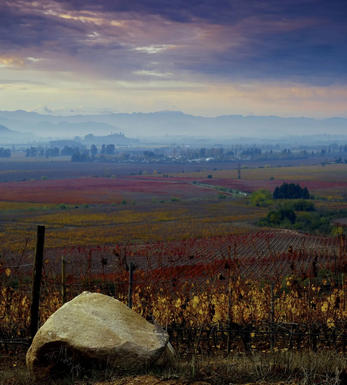
Clos Apalta
Clos Apalta is a wine estate in the Apalta Valley, a sub-region of Colchagua, Chile. It was founded in 1994 by the Bournet Lapostolle family; their first vintage was 1997. Charles-Henri de Bournet Marnier Lapostolle has led the property as CEO since 2013. Michel Rolland has been the winemaking consultant here since the beginning.
The 60-hectare vineyard is laid out in an amphitheatre, largely facing southeast. There are a lot of old vines here, with an average age of 80 years old. The oldest vines date back to 1915-1920. The vineyard has been certified organic since 2009.
The wines here are red Bordeaux blends. Carménère is the signature grape variety here, along with Merlot, Cabernet Sauvignon, and Petit Verdot. There are two wines produced: Clos Apalta and a second wine called Le Petit Clos.
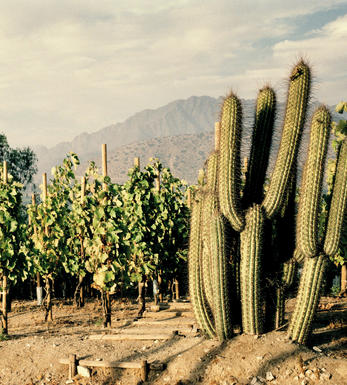
Chile
A viticultural paradise with hot, sunny days, chilly nights, little rain and cooling breezes, Chile is famous for being the only wine-producing country free of the devastating phylloxera bug. Despite the rise of neighbouring Argentina, which produces twice as much wine, Chile remains South America's (and arguably the world's) finest source of well-priced, excellent-quality varietal wines with sleek, fruity reds and ripe, clean whites. Rosé, sparkling and even sweet wines also do well here. As ambitious winemakers search for better sites (especially higher up and in cooler areas), and constantly improve techniques in the winery and vineyard, some truly fine examples are beginning to emerge. Joint ventures like Almaviva, (a partnership between Concha y Toro and Mouton-Rothschild), lead the way and many are following.
The vine was introduced to Chile's Central Valley by the Spanish Conquistadores in the mid-16th century, but 1851 marked the turning point for the Chilean wine industry, when Don Silvestre Ochagavia Echazarreta imported and planted a range of French vine varieties. As phylloxera ravaged Europe, Chile was the only country left with healthy vines. Political and economic turmoil, combined with falling consumption, put the brakes on the country's development in the 1970s and 1980s, but once democracy was restored, investment (both internal and external), equipment and expertise flooded in. With the introduction of temperature-controlled stainless-steel vats, cool storage, and oak barrels, Chile underwent a winemaking revolution.
Chile's most important red grape is Cabernet Sauvignon, yielding increasingly elegant and concentrated wines and some very good Bordeaux blends. Some have seen the discovery of old Bordeaux grape, Carmenère (aka Grand Vidure) as Chile's unique selling point, as Malbec has been for Argentina. This remains a moot point but, long mistaken for Merlot, with which it is still usually blended, Carmenère produces complex, earthy reds with rich, blackcurrant flavours and firm, ripe, tannins.
Chardonnay is the most popular white, especially from cooler regions like the Casablanca and San Antonio valleys. Thanks to a replanting programme which saw genuine Sauvignon Blanc replace its lower-quality imitators, some excellent examples are now produced, offering a halfway house between the grassy herbaceousness of Sancerre and the piercing, tropical fruit intensity of New Zealand Sauvignon Blanc. Juicy but elegant Pinot Noirs and rich, stylish Syrahs are beginning to make a reputation for themselves while Riesling, Viognier and even Gewürztraminer all show promise.
Hemmed in by the Andes to the east, the Pacific to the west, the Atacama Desert to the north and Antarctica to the south, Chile's climate is Mediterranean. The only down side is the lack of rain, with irrigation required virtually everywhere. Most of the country's vines are in the southern half of the country, centred on the 1,000km-long plateau of the Central Valley south of the capital, Santiago. This area is home to Chile's most famous region, the hot, dry Maipo Valley with its Napa Valley-like Cabernets and ripe Chardonnays with good acidity.
Further south is the larger Rapel Valley, with its Colchagua, Cachapoal and Apalta sub-regions. This hot region produces succulent, full-flavoured reds, the country's best Merlot and some very fine Cabernets. The Central Valley is also home to the slightly less hot Curicó Valley, and the cooler and wetter Maule Valley, Chile's oldest wine region.
Here, and the areas below it at the foot of the Central Valley, Itata, Bío-Bío and Malleco, are Chile's most undeveloped but also some of its most promising. The hilly, cooler coastal regions of Aconcagua, San Antonio and Casablanca, west and north-west of Santiago, have already shown the way, especially for white wines, with the latter probably producing Chile's best.
Recommended Producers: De Martino, Casa Lapostolle, Concha y Toro,, Errazuriz, William Fèvre (Don Victor), Neyen.
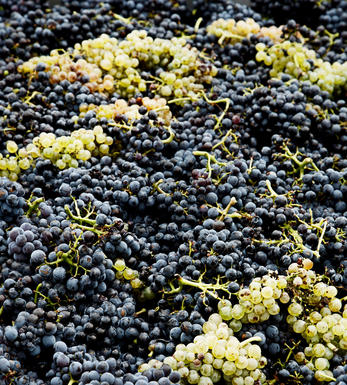
Cab.Sauvignon & Carmenère
Carménère is considered as an ideal blending partner with Cabernet Sauvignon, as well as with other Bordeaux varieties (Merlot and Cab. Franc)
Carmenère
Chile is the bastion of the Carmenère grape today but during the early19th century it was one of the most widely cultivated grape varieties in the Médoc and Graves regions of Bordeaux where it dominated as blending partner of Cabernet Franc. However its susceptibility to the twin evils of phylloxera and oidium led to growers uprooting it in the 1860s and replacing it with better yielding grape varieties such as Merlot.
It was first introduced in Chile (where it is also known as Grand Vidure) in the 19th-Century where it thrived on the country’s phylloxera-free vineyards, as most of its vines are planted on native rootstock. For a long time it stayed in obscurity, as it was mixed with Merlot plantings in the vineyards but now is being identified, vinified and labelled separately.
In Chile it is typically blended with Cabernet Sauvignon and Merlot, imparting succulent and luxurious fuitness. Many of the country’s flagship wines incorporate judicious proportions of Carmenère in blends; Almaviva, Neyen, Sena. It is increasingly being bottled as a single varietal wine. Carmen and De Martino were two of the first wineries to champion the grape as the signature varietal of Chile.
Carmenère wines are deeply coloured and are usually well structured with smooth, well-rounded tannins, and ripe berry fruit flavours. Cooler climate regions, like the coastal Limari in Chile, produce an earthy, leaner, more elegant style with crunch red fruit and green pepper flavours. Warmer climates, like in Maipo, give concentrated, heady wines, inky-coloured and with opulent notes of dark chocolate, soy sauce and black pepper.
Cabernet Sauvignon
It is the most famous red wine grape in the world and one of the most widely planted.
It is adaptable to a wide range of soils, although it performs particularly well on well-drained, low-fertile soils. It has small, dusty, black-blue berries with thick skins that produce deeply coloured, full-bodied wines with notable tannins. Its spiritual home is the Médoc and Graves regions of Bordeaux where it thrives on the well-drained gravel-rich soils producing tannic wines with piercing blackcurrant fruits that develop complex cedarwood and cigar box nuances when fully mature.


Buying options
Add to wishlist
Description
The 2018 Clos Apalta is 64% Carménère, 18% Cabernet Sauvignon and 18% Merlot from Apalta, Colchagua, aged for 24 months in 85% new barrels. The ripe, complex, clear nose offers prune, blueberries and blackberries along with pepper, tobacco, rosemary, cigar box and a whiff of smoke. Creamy and broad in the mouth with good volume, a firm flow and contained structure. The tannins set the tone while the mellow freshness underlines the sugary profile. A genuine Michel Rolland wine made during a year of subtle flavours.
Clos Apalta is the jewel in the crown of the Bournet family, who also own Lapostolle. From a winery hewn into the granite rock of Apalta and with winemaking overseen by the renowned oenologist Michel Rolland, they make only two wines, both in the Bordelais style: Clos Apalta and Le Petit Clos, two Carménère-based blends.
Drink 2024 - 2036
Joaquín Hidalgo, Vinous.com (June 2022)
wine at a glance
Delivery and quality guarantee